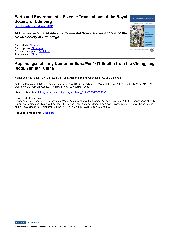摘要
The early Cambrian Chengjiang biota in Yunnan, southern China has yielded many articulated exoskeletons of the spiny redlichiid trilobite Eoredlichia intermedia, of which some have their appendages exceptionally well preserved. Both of the paired uniramous antennae of a medium-sized holaspis consist of 46-50 short segments (articles), each of which bears a fine spine near its inner edge. Behind the antennae there are twenty-one pairs of biramous limbs: three pairs are situated underneath the cephalon, one pair underneath each of the fifteen thoracic segments, and probably three pairs underneath the small pygidium. The endopod consists of a broad basis and seven podomeres, of which the last is divided into three terminal spines. The exopod is blade-like, and according to one interpretation, is dorsally hinged to the basis of the endopod; all alternative suggestion being that both the endopod and exopod are split from the basis, the latter being independent and not forming part of the endopod. The exopod has a prominent anterior rim, and possesses about forty long filaments along the posterior margin, and short setae along the rounded distal lobe. The basic appendage features of the redlichiid trilobites, and likewise the gut, are comparable to those of other known Cambrian polymerid trilobites that belong to more distantly related clades.
- 出版日期2009
- 单位云南大学
